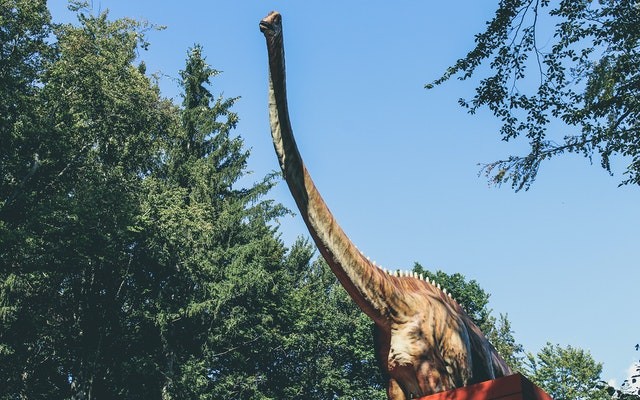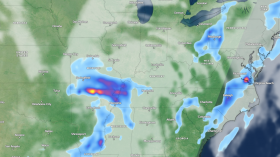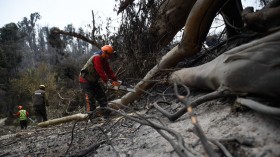These stones were conveyed over 600 miles in the 'belly of a dinosaur.' A new study discovered that during the Mesozoic Era, dinosaurs with long necks migrated hundreds of miles across what is now called the American Midwest. How do scientists know that these huge beasts migrated?

The Pink Stones
The dinosaurs swallowed pink stones in what is now Wisconsin, walked westward over 1,000 kilometers (600 miles), and then passed away in the region that's now called Wyoming, abandoning the stones in a new location.
Josh Malone, a lead researcher on the study, also a graduate student in the Jackson School of Geosciences at the University of Texas at Austin, told Live Science: "We believe that these stones were conveyed from southern Wisconsin to north-central Wyoming in the dinosaur's belly."
This current finding is "one of, if not the longest concluded instances of [nonavian] dinosaur migration" documented, Michael D'Emic, an associate professor in the Department of Biology at Adelphi University in New York and a co-researcher of the study added.
Also Read: Scientists Finally Unlock Dinosaur DNA
Dinosaur Migration
The study is the first of its kind to make use of the so-called stomach stones - rocks recognized as "gastroliths" that are gulped to help crush food in the stomach - as a substitute for the migration of dinosaurs, Malone said. But Malone didn't set out to mystify over dinosaur migration initially, a little topic studied in paleontology.
Instead, he was paying visits to his father, David Malone, a geologist at Illinois State University, who was performing a mapping project in Wyoming in 2017."I was not yet into geology- I was just paying my dad some visit just for fun," Malone said. "We were strolling around in the Bighorn Basin, and we continued seeing these stones that were polished in the [late Jurassic] Morrison Formation.
I inquired, 'Dad, what are these?' And he replied, 'Oh, they are gastroliths.'" But when Malone asked his dad where the gastroliths were from, his dad wasn't certain. Josh Malone said that it was the start of it all, and that day they spent in the field was the reason he studied geology.

The Zircon Crystals
The project became his senior thesis at Augustana College in Illinois, and it was released online on Feb. 27 in the journal Terra Nova. From that trip in the field with his father - who is a co-researcher on the study, Malone carried hundreds of the pink quartzite gastroliths back to Augustana College and squashed them to get the zircon crystals out.
Malone said they do that because these zircons give a pretty good fingerprint to where they originate from. Geologists already understand that pink quartzite, like the specimen Malone discovered in Wyoming, happens only in a handful of regions throughout North America, including New Mexico, Idaho, Wisconsin, and Montana.
By finding out the ages of the zircons within the quartzite specimen, Malone and his coworkers successfully match the stones with the already-dated pink quartzite across the continent.
Related Article: New Discovery: The Largest Dinosaur, 'The Spinosaurus' Was Not Well-Adapted To Aquatic Life
For more news, updates about dinosaurs and similar topics don't forget to follow Nature World News!
© 2024 NatureWorldNews.com All rights reserved. Do not reproduce without permission.




![Wildfire Activity in Wet African Tropical Forests Exacerbated by Deforestation, Climate Change [Study]](https://1471793142.rsc.cdn77.org/data/thumbs/full/70409/280/157/50/40/wildfire-activity-in-wet-african-tropical-forests-exacerbated-by-deforestation-climate-change-study.jpg)
